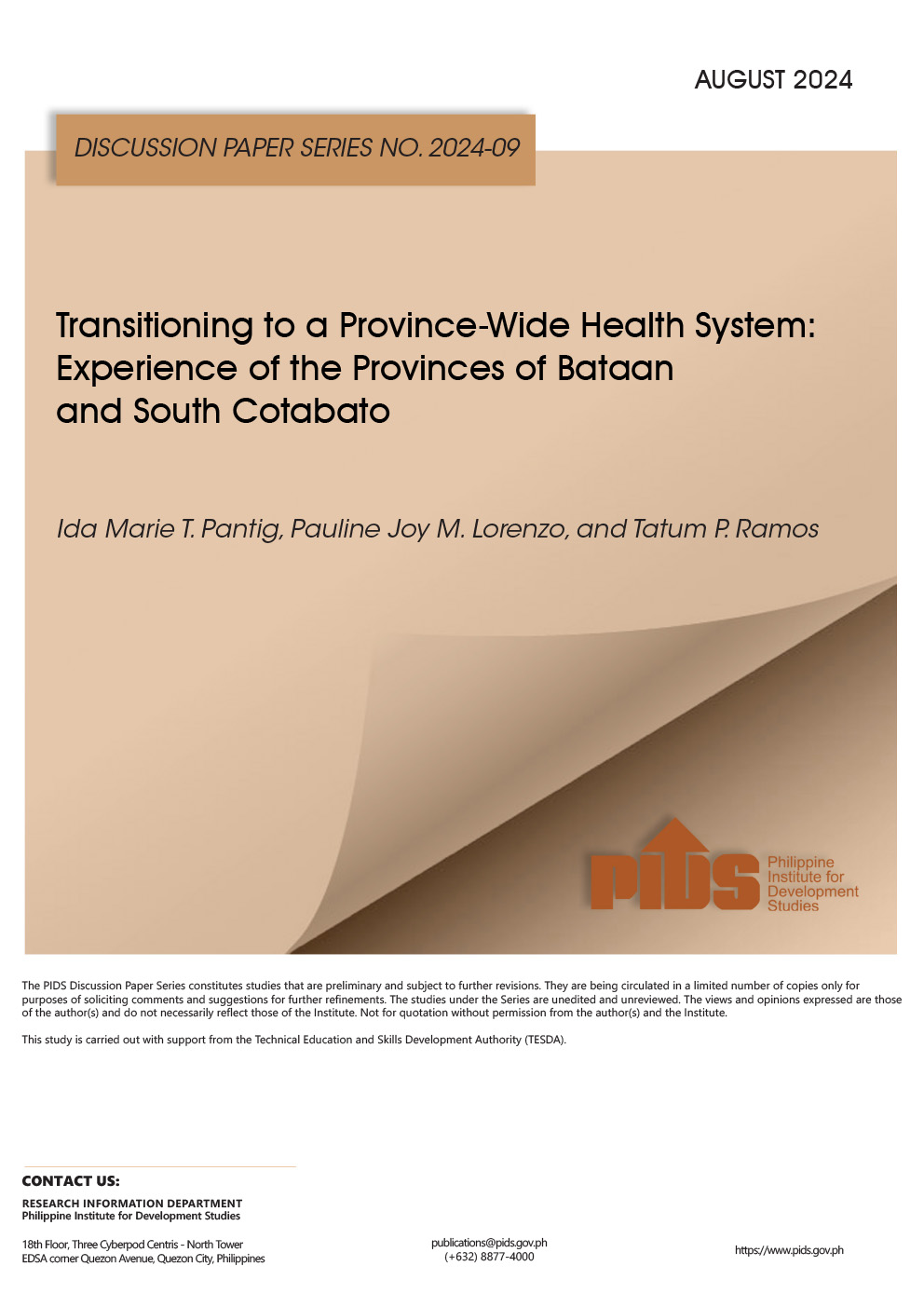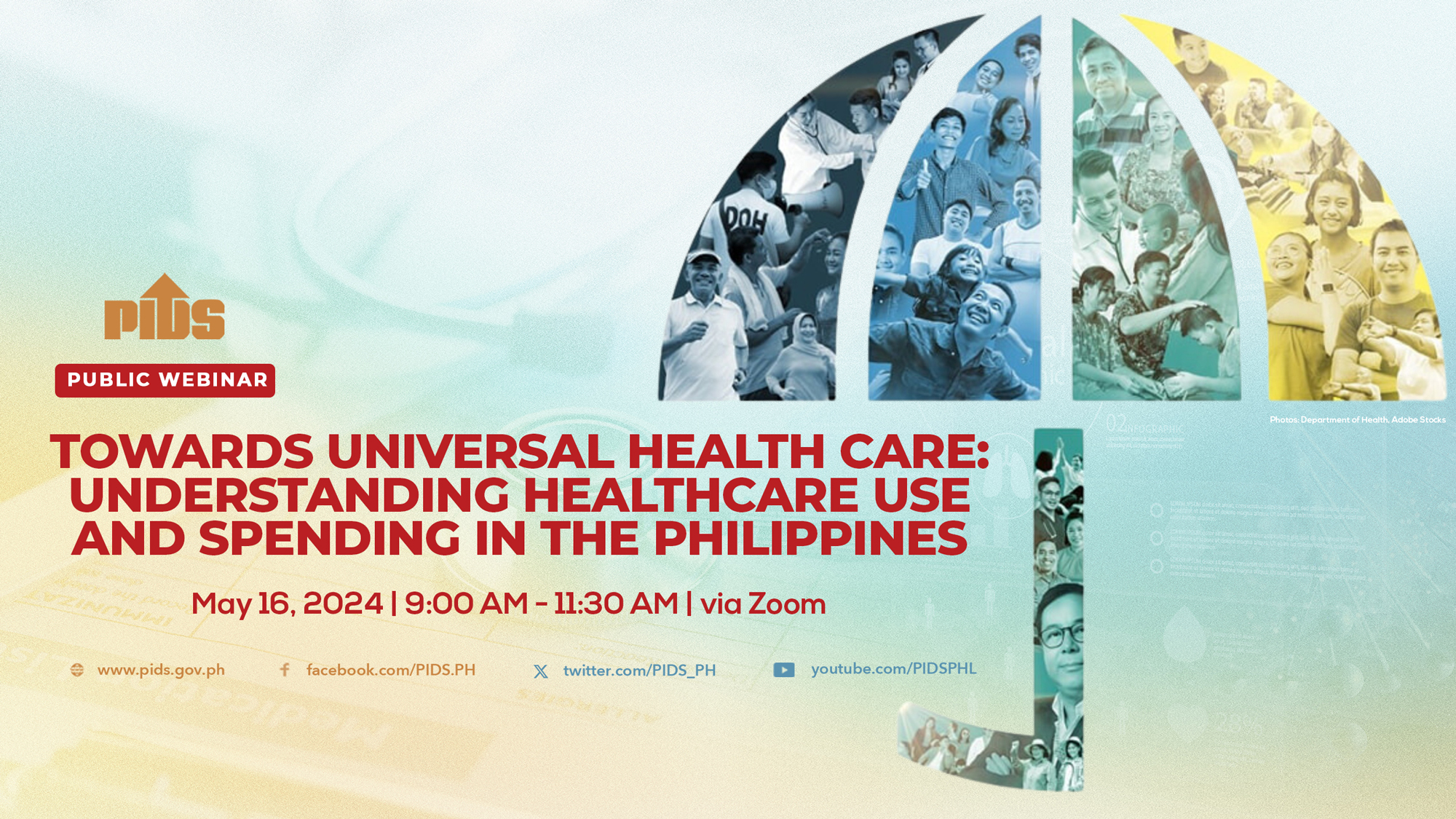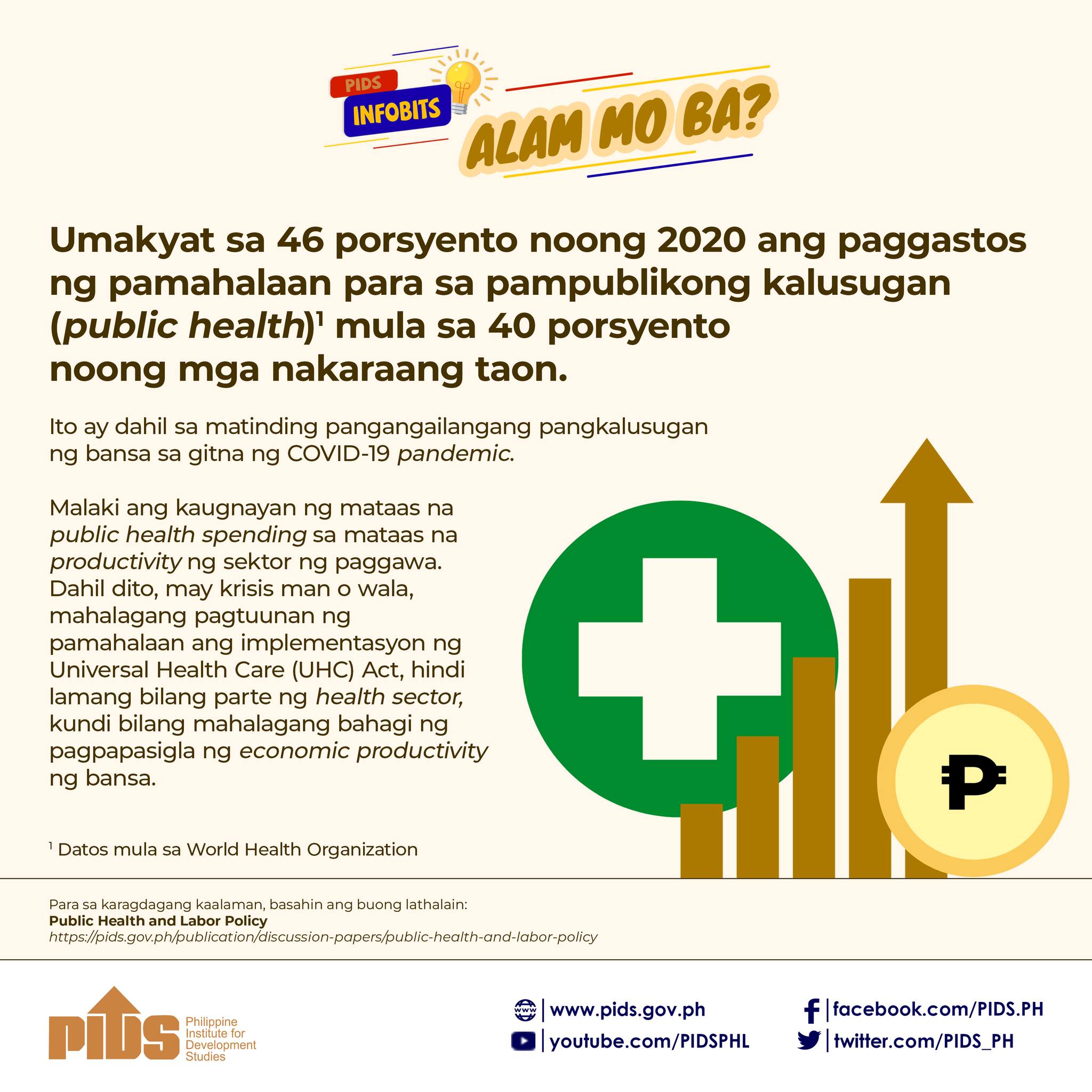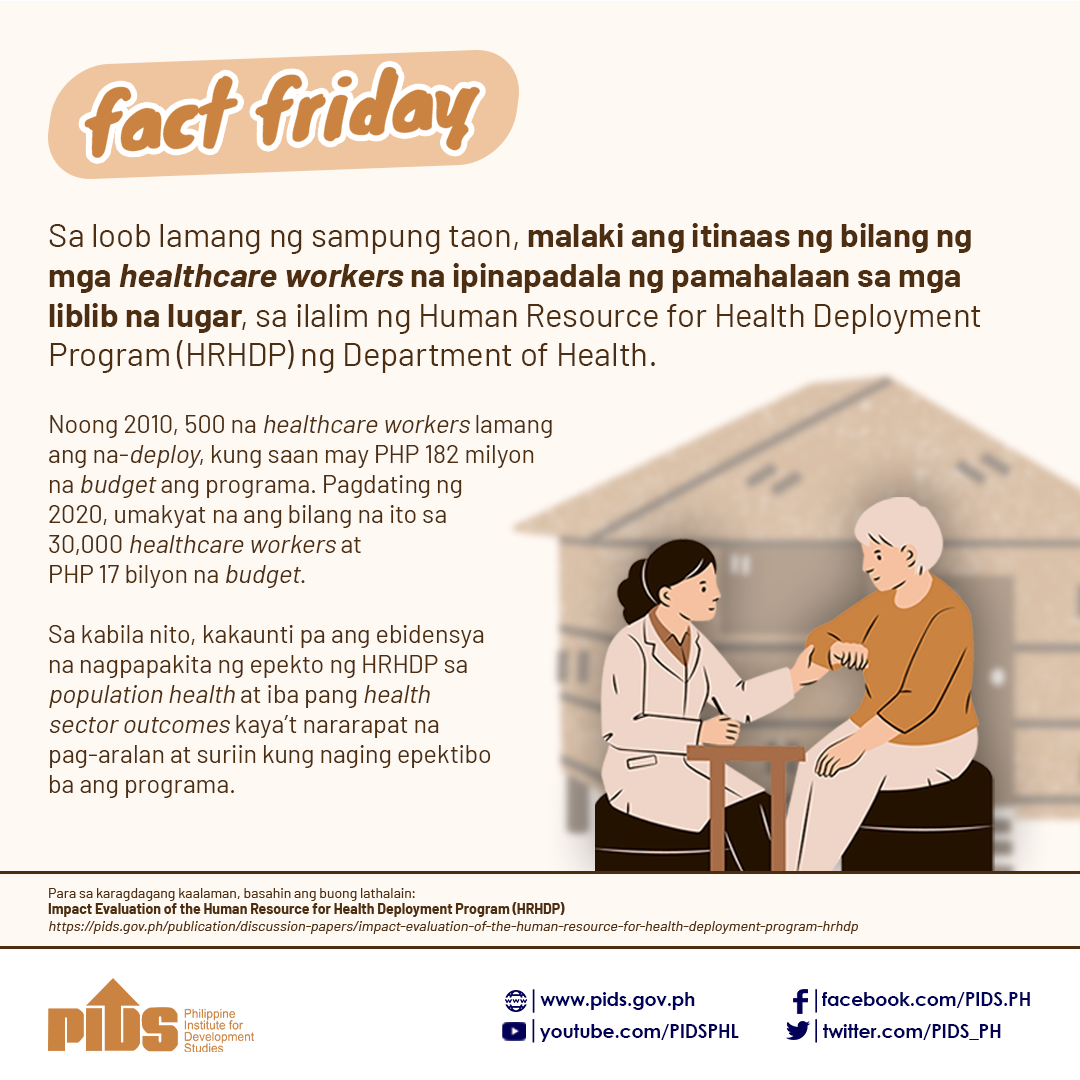MEMBERS of state-owned Philippine Health Insurance Corp. (PhilHealth) still pay out of pocket for medical services despite a law on universal healthcare, according to state think tank Philippine Institute for Development Studies (PIDS).
The elderly, women, rural and poor Filipinos are more likely to spend more, with the national health insurance program coverage limited to 40% of total hospital costs, PIDS said in a December 2022 study.
“Despite modest improvements in health outcomes, inequities continue to exist due to unresolved challenges in access to healthcare,” PIDS senior research fellow Valerie Gilbert T. Ulep, supervising research specialist Jhanna Uy and research consultants Clarisa Joy A. Flaminiano, Vicente Alberto R. Puyat and Victor Andrew A. Antonio said.
“This includes the physical constraints due to lack of health facilities, along with the financial risks of catastrophic health expenses especially for vulnerable populations,” they added.
PIDS computed the “support value” — the percentage of hospital care costs shouldered by PhilHealth — using PhilHealth data from 2018 to 2021, along with data sets from the Department of Health, Philippine Statistics Authority and Washington-based Institute for Health Metrics and Evaluation.
While 55.83% was found to be the average support value, the rate varied based on membership type, socioeconomic status, patient accommodation, disease classification, hospital ownership and level, and location.
Elderly members got the lowest support value in both public and private hospitals. Poor indirect contributors had a lower average support value than direct contributors such as like employees.
Women faced higher financial risk due to lower incomes and higher hospital admission rates across all age brackets, the think tank said.
This was for “avoidable conditions” such as nutritional deficiencies that could have been addressed through outpatient and preventive care, it added.
The study found that Filipinos in rural areas were likely to spend more because of the uneven distribution of primary care facilities and accredited hospitals that “do not cover the cost of all services.”
Less than a half (43%) of Level 1 hospitals, which offer minimum health services, were government owned.
Out-of-pocket costs are an important indicator of an effective healthcare system, PIDS said in a November 2016 report.
In 2012, about 1.5 million Filipinos spent more than 40% of their earnings on healthcare. Drugs were the major source of out-of-pocket costs.
PIDS recommended a shift in PhilHealth’s service purchasing and revenue generation to guarantee funds for all covered diseases.
It also said the government should increase the support value of the elderly and invest in health literacy.
“Effective financial protection in a health system should reduce out-of-pocket patient costs that are not covered by insurance, as much as possible,” it said in a separate statement.
The state think tank examined the performance of PhilHealth in terms of population coverage (how many people are covered), service coverage (how many people access care) and financial risk protection (how many people are exposed to out-of-pocket payments).












